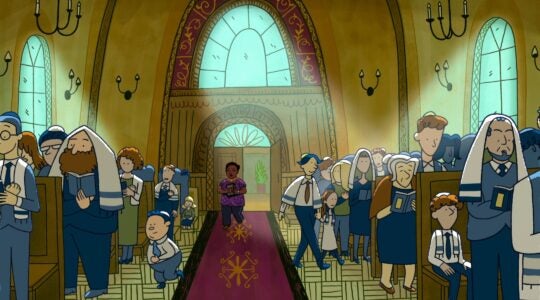On Friday, March 13, Jews will gather in over 500 locations for the annual happening that has come to be known as “Shabbat Across America.” But in only one community, mine, will congregations ranging across the denominational spectrum from right to left come together for this event. True, Hillels do this kind of thing routinely, as do utopian gatherings like Limmud, and small, isolated communities where there is little choice. But otherwise, according to the organizers, we’re it. In a historic show of unity, Reform, Conservative, Orthodox, Reconstructionist and unaffiliated Jews will celebrate Shabbat. Over 300 people have signed up thus far, and the number is climbing.
I’m not writing this for self-congratulatory purposes, though it is nice to live in a community where progressive and traditional Jews get along. I appreciate that our community mikvah is available to all; our day schools, JCC and other agencies stress diversity, and our local federation, which is coordinating Shabbat Across Stamford, sets a highly inclusive tone.
But I can’t claim that it’s been easy to make this work. As president of the local Board of Rabbis, I’m proud but wary, slightly saddened at how difficult it is these days to bring Jews together to celebrate something near and dear to us all — Shabbat. As hard as we’ve tried, we still can’t overcome the idea that wherever two Jews dwell, there are three synagogues, one for each to belong to and one that neither would be caught dead in.
Even though we’ll be eating, singing and learning together, we won’t be praying together. There will be two services, one a traditional davening in the Carlebach style, and the other using instruments, with a more progressive and egalitarian feel. We could have opted for a many more service options, but for the first year, we decided to keep it simple.
There is no way we could have had just one service. That ship sailed years ago. Few non-Orthodox Jews would want their female clergy to sit passively in the women’s section. Neither would the Orthodox want it to be egalitarian. So in two large rooms not far apart, two large groups will be singing the exact same prayers, separately.
We’ll be located in a school on the side of town where most of the Shabbat walkers live. That was a no-brainer. We’ll all light candles together to begin the experience, at the traditional candle lighting time. The food will be kosher. Aside from the progressive service, there will be no instrumentation or microphones used. No money will change hands and we’ll ask people to turn off of their phones. Check.
We found a speaker everyone could agree on — also not an easy accomplishment. But Rabbi Joseph Telushkin fits the bill perfectly. His talk will steer toward issues of common concern, like personal ethics. The word “Iran” will not pass from his lips, not will there be talk about Israel’s elections. Just too divisive.
Other decisions were not so easily made. One would think it would be easy to eat together. The blessings before the meal are more or less shared by all, and singing is a universally joyous thing, right?
Well, not completely. Some feel the “Eyshet Chayil” (Woman of Valor) passage is sexist and condescending. Others think it is integral to the whole experience. So we’ll be introducing that, along with an array of family blessing options, and leave space for all participants to choose what to do at their tables.
Does that mean that people will need to sit only at tables with others of their ideological ilk, where they will be the most comfortable? We won’t assign seats, but we’ll encourage people to spread out and make new friends.
I tell you, this ain’t easy!
The Kiddush and ha-motzi are known to most, but the Grace after Meals is not. Neither are the traditional table songs. Some of my progressive colleagues felt that their congregations would feel patronized and uncomfortable if too much time was spent on these less familiar aspects of their Shabbat experience. More traditional voices suggested that this would be a good time to learn them. But what they were forgetting is that many non-traditionalists still do Shabbat every week, and why should they be told that their Shabbat is somehow less authentic?
Was it always this hard to being Jews together?
And can a woman lead those songs?
When I arrived in Stamford, the female cantor of our Reform synagogue could chant a memorial prayer on Yom HaShoah in an Orthodox shul. Not anymore. The religious right has gotten righter and the left lefter. In such a polarized environment, what can we do to please everyone? So, in a grand compromise, female clergy will be leading various prayers and songs, as will men, but everything will be sung in unison.
And which songs will we sing? Generic old favorites like “Oseh Shalom” and “David Melech Yisrael,” songs most everyone knows, rather than the complex traditional “z’mirot” or ideologically tinged songs like “Salaam” on the left, and on the right, anything remotely suggesting that the messiah is here so let’s rebuild the temple now.
There is no way to please everyone, but our prime goal is to emphasize unity and mutual respect. That goal supersedes everything else, including teaching how to “do” Shabbat. For this experiment to succeed, everyone needs to be equally comfortable —– which means, in fact, that everyone will be at least slightly uncomfortable. We all will need to, at some point, enter that third synagogue.
Is it worth it? Ask me on the 14th. But given the splits that have made Jewish unity a remote pipedream, we feel it’s important to remind ourselves that we remain, on some level, family. For us, Shabbat Across America will be a Shabbat Across the Bow, a heartfelt attempt to forge Jewish unity.
The New York Jewish Week brings you the stories behind the headlines, keeping you connected to Jewish life in New York. Help sustain the reporting you trust by donating today.




